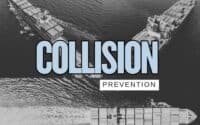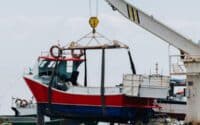Top 10 Technological Innovations Shaping the Future of Ship Design

In the fast-evolving world of maritime shipping, innovation in ship design is crucial for staying competitive, efficient, and environmentally conscious. Modern ships are transforming through groundbreaking technologies that prioritize sustainability, operational efficiency, and safety. From autonomous vessels to advanced materials, these advancements are not just trends; they’re setting the course for the future of global shipping. Let’s dive into the top 10 innovations shaping the vessels of tomorrow.

1. 🌊 Autonomous Shipping Technology
- Overview: Autonomous shipping technology is pushing the boundaries of what’s possible on the open sea. By leveraging artificial intelligence and advanced sensors, autonomous vessels are capable of navigating, monitoring, and even making real-time decisions without human intervention. These vessels are designed to minimize human error, enhance safety, and lower operational costs, especially on long-haul routes.
- Example: One of the standout projects is the Yara Birkeland, a fully electric and autonomous container ship developed in Norway. As one of the first of its kind, it’s designed to reduce CO₂ emissions by transitioning from road freight to sea. Another prominent example is Rolls-Royce’s work on autonomous systems for cargo ships, which aims to make remote vessel monitoring and management a reality.
- Impact: Autonomous technology is expected to reshape global shipping by enabling 24/7 operations, reducing reliance on crews, and minimizing accidents caused by human error. As regulatory bodies establish new frameworks, autonomous ships could soon become standard across major shipping lanes.
2. ⛴️ Advanced Hull Design for Efficiency
- Overview: Hull design plays a pivotal role in ship performance, affecting speed, fuel consumption, and overall stability. Recent advancements in hull architecture are pushing for designs that reduce water resistance (drag) and increase fuel efficiency. Innovations in hull shapes and the use of lightweight, durable materials are driving substantial gains in performance and sustainability.
- Examples: Bulbous bows are a prominent example of advanced hull design. These bow shapes alter the water flow around the hull, reducing drag and enhancing speed. Similarly, double-hull designs have become widely used in tankers, providing additional protection and reducing the risk of oil spills. New materials, such as carbon fiber and composite structures, are also becoming popular for their lightweight and corrosion-resistant properties.
- Benefits: Improved hull design leads to lower fuel consumption, which not only cuts operational costs but also reduces emissions—a crucial factor as the maritime industry works toward net-zero targets. These designs enable ships to carry more cargo with less power, making them a win-win for efficiency and environmental responsibility.
3. 🔋 Hybrid and Electric Propulsion Systems
- Overview: The push for greener, more efficient energy solutions has led to significant advancements in hybrid and electric propulsion for ships. These systems combine traditional fuel engines with electric power, reducing emissions and fuel consumption. Electric and hybrid ships are ideal for short-haul trips, inland waterways, and ferries, where emissions and noise reduction are particularly important.
- Example: The Color Hybrid, operated by Color Line, is the world’s largest plug-in hybrid ship. It uses a battery system to operate on electric power while in port and along the Norwegian coast, significantly reducing emissions in these areas. Another example is the Ellen electric ferry in Denmark, which operates on a fully electric battery system, providing zero-emission transportation between islands.
- Benefits: Hybrid and electric propulsion systems reduce greenhouse gas emissions, lower fuel costs, and create quieter, more sustainable operations. These advantages make them increasingly popular in eco-conscious regions, as well as ports with strict emission regulations.
4. 🚢 3D Printing for Shipbuilding and Maintenance
- Overview: 3D printing technology is transforming shipbuilding and maintenance by enabling the on-demand production of parts, reducing the need for extensive onboard inventory, and minimizing delays in sourcing components. This approach also allows for the rapid prototyping of custom designs and improvements in the manufacturing process.
- Example: In Singapore, Keppel Offshore & Marine collaborated with Nanyang Technological University to produce 3D-printed offshore grade steel parts for shipbuilding, demonstrating the durability and strength of printed components. Another example is the Dutch company Damen Shipyards, which is experimenting with 3D-printed propellers as part of its ongoing innovation in sustainable and efficient ship repair.
- Benefits: The ability to produce parts on demand significantly reduces lead times and repair costs, which is particularly valuable for vessels operating in remote areas. It also minimizes waste, as only the required amount of material is used in the 3D printing process, contributing to sustainability goals.
5. 🌐 Digital Twin Technology
- Overview: Digital twin technology creates a virtual replica of a physical ship, allowing ship operators to monitor real-time data, predict maintenance needs, and optimize performance. By continuously syncing with the physical vessel, digital twins help reduce operational costs and increase efficiency through predictive insights and data-driven decision-making.
- Example: Wärtsilä, a Finnish company specializing in smart technologies for maritime and energy markets, has implemented digital twin technology in their ships to monitor and optimize engine performance. Another example is Maersk, which uses digital twins to simulate voyages and improve operational strategies for efficiency and fuel savings.
- Benefits: Digital twins allow for proactive maintenance, reducing unplanned downtime and extending the life of equipment. They also provide enhanced operational insights, helping companies to reduce fuel consumption, lower emissions, and improve the overall performance of their fleets.
6. 💧 Advanced Ballast Water Treatment Systems
- Overview: Ballast water treatment systems are essential for preventing the spread of invasive marine species across different regions. New treatment systems use advanced filtration, ultraviolet (UV) light, and chemical treatments to neutralize organisms in ballast water, ensuring compliance with strict international regulations.
- Example: Ecochlor, a U.S.-based company, offers a chlorine dioxide-based ballast water treatment system that effectively neutralizes organisms without damaging the marine environment. Another example is Alfa Laval’s PureBallast 3, which uses UV treatment to meet stringent environmental standards and has been widely adopted on vessels worldwide.
- Benefits: These advanced systems help ship operators comply with international environmental standards, reducing the risk of invasive species and protecting marine ecosystems. They also allow ships to operate in regions with strict ballast water regulations, enabling smoother and faster port operations.
7. 🌞 Solar Power Integration
- Overview: Solar power is increasingly being integrated into ship designs to reduce fuel consumption and emissions. Solar panels installed on ships provide supplementary energy, especially for lighting, HVAC systems, and other auxiliary functions, making it easier for ships to operate more sustainably and cut down on reliance on fossil fuels.
- Example: The Energy Observer, a French vessel, utilizes solar panels along with hydrogen fuel cells and wind power for a nearly emissions-free operation. Another example is NYK Line’s solar-powered car carrier Auriga Leader, which uses solar energy to support its lighting system, reducing its fuel consumption and environmental footprint.
- Benefits: Solar power integration lowers greenhouse gas emissions and reduces fuel costs. While solar power alone cannot fully propel large vessels, it serves as a valuable supplementary energy source that decreases the ship’s overall environmental impact.
8. 🚀 Air Lubrication Systems
- Overview: Air lubrication systems involve creating a layer of air bubbles along the ship’s hull to reduce friction between the hull and water. This technology decreases drag, enabling ships to consume less fuel and reduce emissions—a significant advantage for large, fuel-intensive vessels like cargo and tanker ships.
- Example: The Japanese company Mitsui O.S.K. Lines (MOL) has integrated air lubrication technology on its LNG carriers to reduce friction and improve fuel efficiency. Similarly, Silverstream Technologies’ air lubrication system has been installed on vessels like the MSC Group's container ships, where it demonstrated a reduction in fuel consumption by up to 10%.
- Benefits: By reducing drag, air lubrication systems contribute to substantial fuel savings and a lower carbon footprint, helping ship operators comply with tightening environmental regulations and save on operational costs.
9. 🌬️ Wind-Assisted Propulsion Systems
- Overview: Wind-assisted propulsion systems are modern adaptations of traditional sailing techniques, designed to harness wind energy to reduce fuel consumption and emissions in maritime shipping. These systems include technologies like rotor sails, kite sails, and rigid wing sails, which can be retrofitted onto existing vessels or integrated into new ship designs.
- Example: The Pyxis Ocean, a bulk carrier chartered by Cargill, was retrofitted with two 37.5-meter-high WindWings developed by BAR Technologies. These rigid wing sails are designed to harness wind power, potentially reducing fuel consumption by up to 30% on average. The Pyxis Ocean embarked on its maiden voyage with WindWings in August 2023, marking a significant step toward sustainable shipping.
- Benefits: Implementing wind-assisted propulsion can lead to substantial fuel savings and emission reductions, contributing to the maritime industry's decarbonization goals. These systems are particularly effective on routes with consistent wind patterns, offering a viable solution for greener shipping operations.
10. 🛰️ Advanced Navigation and Communication Systems
- Overview: Modern ships are increasingly equipped with sophisticated navigation and communication systems that enhance safety, efficiency, and situational awareness. These technologies include integrated bridge systems, real-time satellite communications, and advanced radar and sonar systems, enabling precise navigation and effective communication with other vessels and shore-based facilities.
- Example: The Ever Given, a large container ship operated by Evergreen Marine, is equipped with an integrated bridge system that combines radar, electronic chart display and information system (ECDIS), and automatic identification system (AIS) to provide comprehensive navigational information. Such systems are standard in modern vessels, facilitating safe and efficient voyages.
- Benefits: Advanced navigation and communication systems improve maritime safety by providing accurate real-time data, reducing the risk of collisions and grounding. They also enhance operational efficiency through optimized routing and better coordination with ports and other ships, leading to cost savings and timely deliveries.
Table Summary
| ShipUniverse: Top 10 Technological Innovations Shaping Ship Design | |||
|---|---|---|---|
| Innovation | Core Feature | Real-World Example | Impact & Benefits |
| Autonomous Shipping Technology | AI-driven navigation, real-time decision-making | *Yara Birkeland* (Norway), Rolls-Royce autonomous projects | Reduces human error and operating costs; improves safety with 24/7 autonomous operations. |
| Advanced Hull Design for Efficiency | Streamlined hull shapes, lightweight materials | Bulbous bows on container ships, double-hull tankers | Lower fuel use, better speed, reduced emissions, and increased cargo capacity. |
| Hybrid and Electric Propulsion Systems | Combines electric and fuel engines | *Color Hybrid* ferry (Norway), *Ellen* electric ferry (Denmark) | Reduces emissions and noise, ideal for eco-conscious regions and ports with strict regulations. |
| 3D Printing for Shipbuilding and Maintenance | On-demand part production | Keppel Offshore’s steel parts, Damen Shipyards’ 3D-printed propellers | Reduces downtime, lowers repair costs, minimizes waste, and speeds up part replacement. |
| Digital Twin Technology | Virtual replica for real-time monitoring | Wärtsilä engine monitoring, Maersk’s operational simulations | Optimizes maintenance, lowers unexpected costs, enhances operational efficiency. |
| Advanced Ballast Water Treatment Systems | UV, chemical, and filtration treatments | Ecochlor chlorine systems, Alfa Laval PureBallast 3 | Prevents spread of invasive species, helps ships comply with international regulations. |
| Solar Power Integration | Solar panels for auxiliary power | *Energy Observer*, *Auriga Leader* car carrier | Lowers fuel consumption, reduces emissions, ideal for supporting non-propulsion systems. |
| Air Lubrication Systems | Layer of air bubbles along hull | Mitsui O.S.K. Lines LNG carriers, Silverstream systems on MSC ships | Reduces drag, saves fuel, cuts emissions, and boosts efficiency on long voyages. |
| Wind-Assisted Propulsion Systems | Harnesses wind with sails or rotors | *Pyxis Ocean* with WindWings, Norsepower rotor sails | Decreases fuel consumption up to 30% with consistent wind, significantly lowering emissions. |
| Advanced Navigation and Communication Systems | Integrated bridge and real-time data systems | *Ever Given* with radar, ECDIS, AIS | Enhances safety, reduces collision risk, optimizes routing for fuel and time efficiency. |

Do you have a Maritime Product or Service that may be of interest to Shipowners? Tell us about it here!
Do you have feedback or insights? Please reach out to editor @ shipuniverse.com



